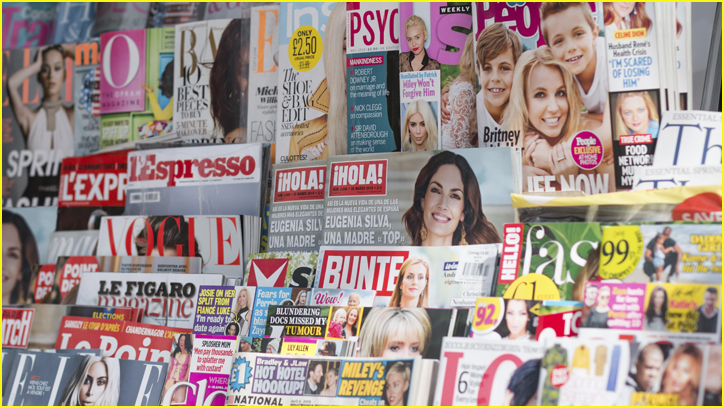The 'rumor of celebrity' as a factor of positioning and empowerment of personalities in the gossip magazines

Rumor is often thought negatively to mislead the public, and at times to shame and/or damage the reputation of celebrities. The aim of this doctoral thesis is to show and demonstrate the positive effects of the rumor in popular celebrity-based media.
Contemporary culture is popular culture and celebrities are one of popular culture's most relevant products. In fact, in capitalistic economies, the mass media are generally commercial enterprises, where the primary objective is profit. This is the reason why celebrities are considered as commodities, and cultural artifacts and rumors have a significant influence on them to obtain substantial benefits. Moreover, it is important to notice that today's celebrities concoct their lives for public consumption. While celebrity studies is a burgeoning area, no attention has at yet been paid to how rumor functions in celebrity magazines.
This research discusses how rumor and celebrity interact with each other to impact on people who are recognizable and famous, and in what way they are positioned and empowered by the use of rumor built as a narrative. The interaction of rumor and celebrity have developed an original concept in this investigation that has been coined as ‘rumor of celebrity' due to its distinct features compared to another kind of rumors.
For this thesis, I have selected two major Spanish gossip magazines such as ¡Hola! and Pronto which are the best-selling magazines in Spain, the treatment of the celebrities are different, they still belong to the family of the founders, and both were founded in Barcelona. The cases that have been analyzed are the following couples: David Bustamante and Paula Echevarría; Carmen Martínez-Bordiú and José Campos; Charlene Wittstock and Alberto of Monaco; Elsa Pataky and Chris Hemsworth; Shakira and Piqué; Darek and Ana Obregón; Darek and Susana Uribarri, and Isabel Preysler and Mario Vargas Llosa.
The first part of the study establishes the precedents and the context in which rumors, celebrity and gossip magazines environment is developed. This framework is based on the information provided by the central literature written by the most prominent theorists into different categories such as books and academical articles. Moreover, it has been valued specific personal interviews, television programs, and movies related to the topic of the investigation.
The second part is a research procedure conducted in two phases. Firstly, it has performed a content analysis to select the analytical units (physical units, syntactical units or referential units) whose information have been registered in a simple-coding sheet for content analysis. Secondly, I have orchestrated a qualitative content analysis to interpret the data.
The conclusions chapter outlines the significant pertinence of the research, claiming the relevance of identifying the function of rumor and celebrity in gossip magazines in the influence that helps to position and empower the celebrities.
Universitat Autònoma de Barcelona
References
Tesis doctoral. . El proceso de fabricación del ‘rumor de celebridad’ como factor de posicionamiento y potenciación de personajes en la prensa del corazón. Análisis de casos en ¡Hola! y Pronto, Luis Fernando Romo Pedrejón. Defendida en el programa de doctorado en Medios, Comunicación y Cultura. Dirigida por la Dra. Joana Gallego

